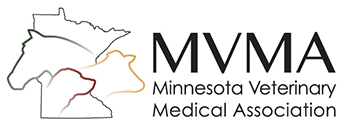- Membership
- Vet Techs
- Classifieds
- Education
- Get Involved
- Resources
- Annual Conference
Veterinary Technician LicensureTechnician Certification through MVMA ends June 30, 2026 and will be replaced by Technician Licensure through the Minnesota Board of Veterinary Medicine effective July 1, 2026. This change is due to the passage of the Veterinary Technician Licensure bill in 2024, which will result in veterinary technicians being included in Minnesota’s Veterinary Practice Act starting in 2026. On this page, you’ll find:
For more than forty years, MVMA has offered a voluntary certification program for veterinary technicians. However, there was no legal definition of the title in Minnesota, so anyone could call themselves a veterinary technician. Currently, veterinary technicians can only work under direct supervision (within visual or audible range) of a veterinarian, who assumes all responsibility for an employee’s professional performance. With licensure, the scope of practice will be expanded to allow remote supervision of LVTs and for LVTs to provide direct supervision of unlicensed staff members. This scope of practice will still be under the direction and delegation of tasks from a licensed veterinarian. Frequently Asked Questions (Updated 6/3/25) We've compiled answers to what we know as of June 2025 in the FAQ document below, but please note that rule writing is still in process. The legislation authorizes the BVM to establish licensure and related practice requirements for LVTs. Rules will become effective July 1, 2026. Drs. Ann Brownlee and Al Balay representing MVMA, along with Kim Horne, CVT, and Sam Geiling, CVT, representing MAVT, are supporting the Board of Veterinary Medicine on a task force during the rule making process. Veterinary Technician Licensure: What We Know So Far (PDF) PREPARING TO APPLY FOR TECHNICIAN LICENSURE (ADDED 10/1/25) In this new resource, we detail what you will need to know and do as you prepare to apply for licensure. Three separate sections outline the process and requirements for: current CVTs, lapsed CVTs, and never-credentialed veterinary staff. Preparing to Apply for Licensure (PDF) AFFIDAVIT TEMPLATESWith the encouragement of the Minnesota Board of Veterinary Medicine, the MVMA has created two different affidavit templates that satisfy the licensure requirements. There is no requirement to use the affidavit templates provided by MVMA, but they are available for your use courtesy of MVMA. Dr. Al Balay's Jan/Feb 2026 MVMA Messenger Article Introducing the Templates VIRTUAL OFFICE HOURSNo office hours are scheduled at this time. (Note: no CE credits will be awarded for participation.) veterinary practice act updated 2024Minnesota's Veterinary Practice Act was updated in 2024 to include Licensed Veterinary Technicians. Licensure of technicians will take effect July 1, 2026. The Board of Veterinary Medicine is currently making edits to the proposed rules and will post an updated version in late summer 2025 before opening a second public comment period. Updated Veterinary Practice Act Video by Sam Geiling, CVT: Changes to Minnesota Veterinary Practice Act Bill Language & Additional ResourcesFinal Bill Language (PDF) Final Bill Language (article 20, starts on page 323; enter 323.7 in the Jump to Page/Line number and hit enter in the search bar). AVMA News (5/30/24): Minnesota creates title protection, licensure pathway for veterinary technicians If you have further questions or feedback, please contact Dr. Allen Balay at ([email protected] or 320-905-6423) or Kim Horne, AAS, CVT, VTS (Dermatology) at ([email protected] or 952-270-5439). HF 1228-Veterinary technicians, practice of veterinary technology, and unlicensed veterinary employees regulated
Introduced on Thursday, Feb. 2, 2023, by Rep. John Huot - click here for more information SF 1522-Veterinary technicians, the practice of veterinary technology and unlicensed veterinary employees regulationIntroduced on Thursday, Feb. 9, 2023, by Senator Robert Kupec - click here for more information Supporting Documents1) Article's from the "Getting to the Bottom of the Veterinary Technician Shortage in Minnesota": ○ Twenty-fourth article 2) How Credentialed Veterinary Technicians Impact Public Safety 4) Licensure in Veterinary Medicine: How it Protects the Public and our Animals 5) Points of Why Regulatory Credentialing for Veterinary Technicians 6) JAVMA 9/15/2021 Article: Are We in a Veterinary Workforce Crisis? 8) Veterinary Technician Enhancement Act Infographic (this version intended for veterinary community) Letters of SupportAVMA letter of support for Vet Tech Licensure
|
